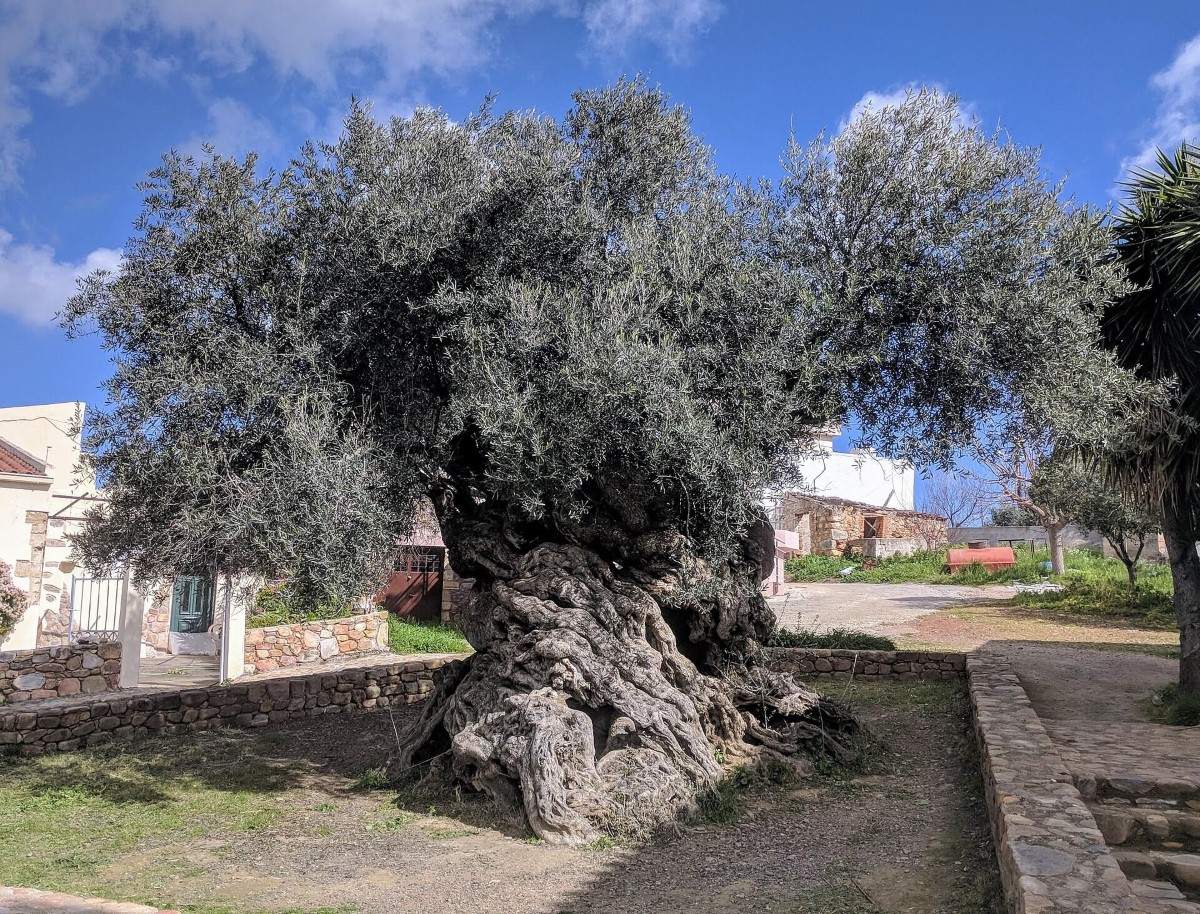The oldest olive tree in the world is believed to be the “Olive Tree of Vouves” (or “Elia Vouvon” in Greek), located in the village of Ano Vouves on the island of Crete, Greece. This ancient tree is estimated to be between 2,000 and 4,000 years old, though some experts suggest it could be even older. It is one of the most famous and well-preserved olive trees in the world and has become a symbol of longevity, resilience, and cultural heritage.
Key Facts About the Olive Tree of Vouves
- Age: Estimated to be 2,000 to 4,000 years old, making it one of the oldest living olive trees.
- Location: Ano Vouves, Crete, Greece.
- Size: The trunk has a circumference of 12.5 meters (41 feet) and a diameter of 4.6 meters (15 feet).
- Status: Still produces olives today, which are harvested and used to make olive oil.
- Cultural Significance: The tree is considered a monument of nature and is protected by the Greek government. It has become a popular tourist attraction and a symbol of Crete’s rich olive-growing tradition.
Other Ancient Olive Trees
While the Olive Tree of Vouves is the most famous, there are several other ancient olive trees around the Mediterranean region that are also thousands of years old:
- The Olive Tree of Kavousi (Crete, Greece):
- Located in the village of Kavousi, this tree is estimated to be 3,000 years old.
- It is considered one of the oldest olive trees in the world.
- The Olive Trees of Gethsemane (Jerusalem, Israel):
- Located in the Garden of Gethsemane, these trees are believed to be over 1,000 years old.
- They are associated with the biblical story of Jesus praying before his crucifixion.
- The Olive Tree of Al Badawi (Bethlehem, Palestine):
- Located in the village of Al-Walaja, this tree is estimated to be over 4,000 years old.
- It is considered one of the oldest olive trees in the world and is a symbol of Palestinian heritage.
- The Olive Trees of Sardinia (Italy):
- Sardinia is home to several ancient olive trees, some of which are estimated to be over 3,000 years old.
- These trees are a testament to the island’s long history of olive cultivation.
- The Olive Trees of Spain:
- In Spain, particularly in the region of Andalusia, there are olive trees estimated to be over 1,000 years old.
- These trees are part of Spain’s rich olive oil-producing tradition.
Why Are Olive Trees So Long-Lived?
Olive trees are known for their remarkable longevity due to several factors:
- Resilience: They can survive in harsh, arid conditions and poor soil.
- Regeneration: Even if the trunk is damaged or hollowed out, the tree can continue to grow and produce fruit.
- Disease Resistance: Olive trees are resistant to many diseases and pests.
- Deep Roots: Their extensive root systems allow them to access water and nutrients deep underground.
Cultural and Historical Significance
Ancient olive trees are not just botanical wonders; they are also living witnesses to history. Many of these trees have survived through the rise and fall of civilizations, wars, and natural disasters. They are deeply intertwined with the cultural and religious heritage of the Mediterranean region and continue to be revered as symbols of peace, endurance, and abundance.
Summary
The Olive Tree of Vouves in Crete, Greece, is widely regarded as the oldest olive tree in the world, with an estimated age of 2,000 to 4,000 years. Other ancient olive trees can be found in places like Israel, Palestine, Italy, and Spain, each with its own historical and cultural significance. These ancient trees are a testament to the olive tree’s resilience, longevity, and enduring importance in human history.













